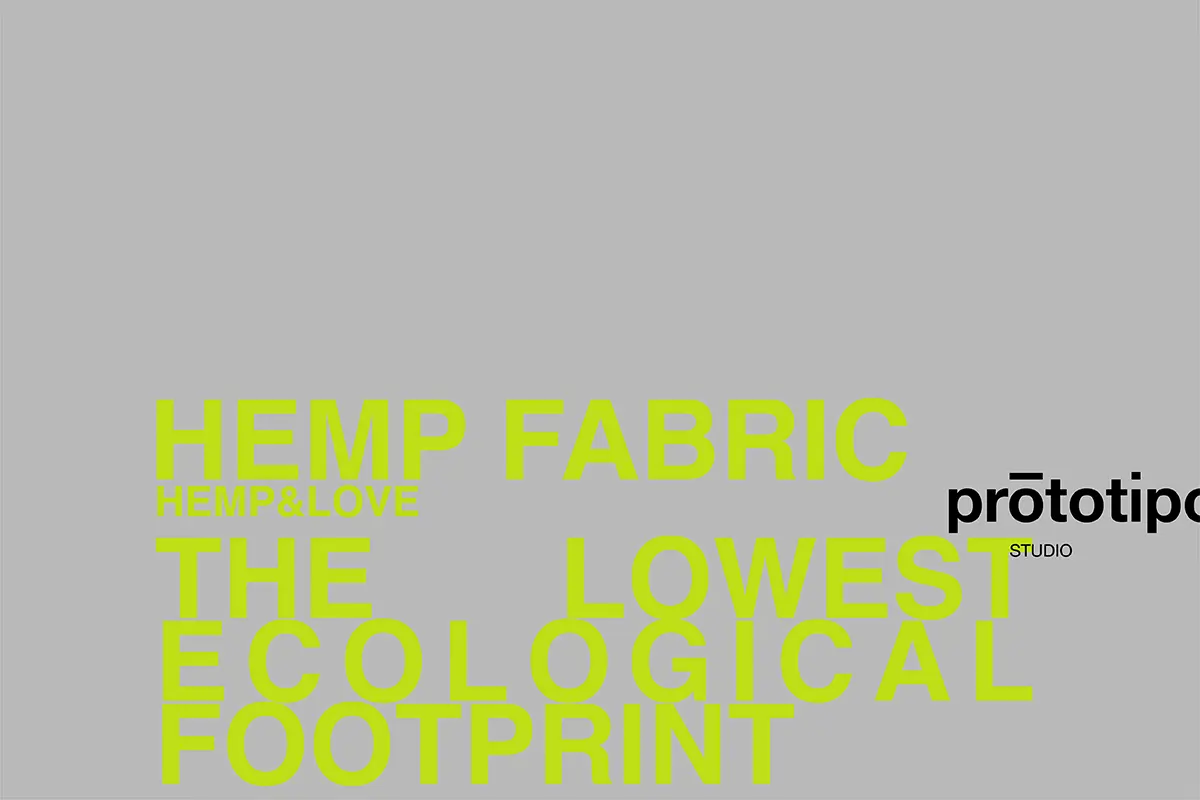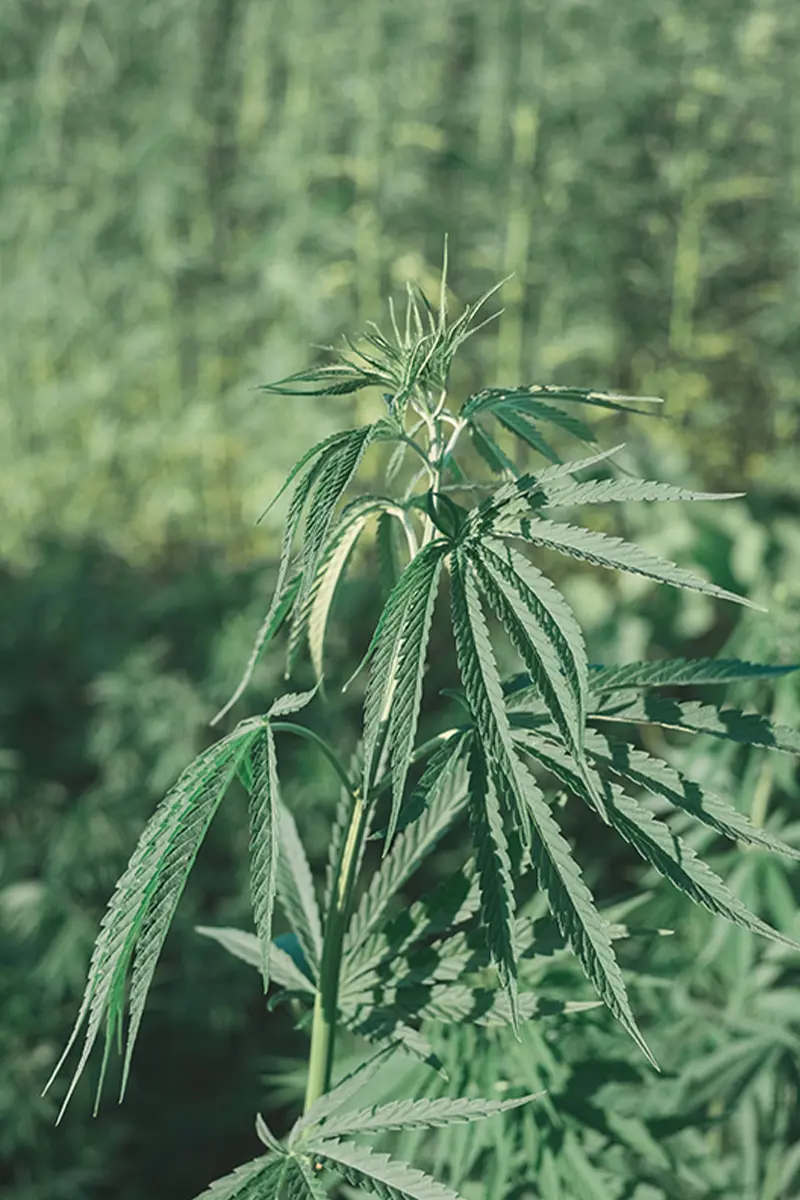Hemp can grow nearly anywhere globally, in different soil types, even in short growing seasons or in dry regions, without pesticides
What is hemp used for?
Hemp has a yield per hectare 2.5 times higher than cotton in terms of fibers, and it is a short cycle crop, needing 90 to 120 days to grow, depending on the variety and climatic conditions. This, and the fact that it can repair damaged soils by reversing the effects of compaction and erosion and returns 60% of nutrients, gives it the ability to regenerate soil, a process known as phytoremediation, which uses green plants and the associated microorganisms to either remove toxic environmental contaminants or render them harmless.
Hemp is a self-offsetting crop that traps CO2 from the atmosphere, with a ratio of 1.63 tons of CO2 for every ton of hemp produced and it is greener than other viable fibers such as bamboo or organic cotton. According to the Stockholm Environment Institute, the water required to produce 1kg of hemp is between 300 and 500 liters, compared to the 10,000 liters required to produce 1kg of cotton, which, if not organic, also needs pesticides which pollute the soil and the groundwater surrounding the cotton fields, harming wildlife and plants. In addition to this, hemp productivity provides higher returns of up to 3 tons of fiber per hectare compared to 1.35 tons of cotton per hectare.
Hemp&love, Barcelona
Because of its eco-friendly factor, hemp is becoming popular among fashion brands, which are beginning to understand its potential and work with it for their collections. Hemp&Love is one of them; «Hemp is our core business, and we aim to produce 100% hemp clothes while restoring the textile industry in Catalonia through hemp harvesting and yarn and fabric production», state Arnau Sanmarti, Cofounder & President and Joan Marc Moreu, Cofounder & CEO at Hemp&Love. With such a sustainable ecological footprint, hemp fabric seems to be the answer that the fabric industry was looking for.
Two main issues still remain in working with hemp, as Sanmarti says. «Pricing is problematic; it’s difficult to compete with the cotton industry, even in the slow fashion field: hemp is still not mainstream, and prices are higher. At the moment, one of the reasons why we do not produce 100% hemp clothes is that they would be too expensive. Another problem is the lack of hemp suppliers in Europe». As Sanmarti and Moreu state out, finding hemp yarn suppliers in Europe can be difficult.
«We couldn’t find specific fabrics we need from European suppliers; we need to rely on Chinese ones, mostly for mechanical reasons: they have the technology to make the fine yarns we need to produce a certain type of clothes. In eastern Europe, producers focus on bigger yarn, used for other garments, like furniture or jeans». Because of this gap in the fabric production, most brands import from China – undermining the sustainability process they’re trying to build. «We dislike to import from China» they continue, «because you need to carry supplies from so far».
Hemp vs CBD
There is another key factor brands need to consider when it comes to using hemp fabric: the common stigma around it and the confusion about differences between hemp and marijuana. Due to the misinformation about Cannabis, the distinction between Cannabis and its two species — hemp and marijuana — has become unclear, and the terms are perceived as interchangeable. Hemp contains almost no tetrahydrocannabinol (THC), which is the chemical responsible for most of marijuana’s psychological effects. In contrast to marijuana, it can be used to produce fabrics, yarns, and paper. Hemp’s controversial history can though be an advantage for small brands that can use it in their marketing mix. «To us, it’s not a problem; we use it in terms of marketing: we try to educate our audience about it, and we want to take advantage of this to promote our brand», states Moreu.
Hemp tendency to wrinkle and difficulty to pass the fabric through sewing machines
Another issue brands encounter while working with hemp is its tendency to wrinkle, making it hard to pass the fabric through sewing machines. Brands often choose to blend hemp yarn with recycled PET and organic cotton. «The reason behind this choice is that clothes made 100% with hemp are too expensive, and we wanted to make the fabric softer and give it more consistency. Our recycled PET comes from China, but we are looking to find a better solution; we know this is not the best option. If you wash clothes that contain acrylics, they produce microplastics that contaminate the water of the washing machine – also, we feel the pressure to assure where this recycled PET comes from. It’s hard to guarantee its traceability and transparency since it is recycled in China», explains Sanmarti. «We aim to produce 100% hemp clothes, but for now, blending it with other fabrics is still a good option to take the first steps and introduce it into the market».
Hemp fabric advantages
Along with these technical issues, dyeing is the most polluting and energy-intensive process involved in the fashion industry, with 20% industrial water pollution coming from textiles treatment and dyeing. Finding an eco-friendly option that keeps the ecological footprint low can be difficult. «Hemp has positive properties when in contact with skin», say Sanmarti and Moreu «we don’t want to ruin these positive aspects with chemicals and polluting dyes. Dyeing is the most crucial step; the risk of breaking the sustainability chain is high. At the moment, we are using recycled dyes obtained from recycled clothes, but we are having trouble with color consistency. Our next collection will feature natural dyes, which consume less water and produce less waste».
Aside from being one of the more sustainable fabrics out there, hemp fabric has several other advantages: hemp fibers facilitate the self-regulation of body temperature, and the nature of the threads itself makes them effective in blocking 95% of ultraviolet rays, while keeping the fabric breathable and facilitating a high oxygen uptake, inhibiting the growth of microorganisms and bacteria. «Because of the positive effects hemp has on the skin, we’re trying to encourage yarn production in Europe and to make softer yarns without using chemicals, only through mechanical processes», says Sanmarti. «Our plans for the future are to create a valuable ecosystem, based on a circular economy model, that includes the whole production process, from harvesting, to yarn spinning, to textile production, here in Catalonia».
Benefits for business, society, and the environment – The circular economy
Circular economy has proven to be attractive for slow fashion and small brands, providing benefits for business, society, and the environment. In such a system, clothes, textiles, and fibers are kept at their highest value and re-enter the economy after use, never becoming a waste. From this perspective, hemp, with its antimicrobial properties, is one of the strongest and most resistant natural fibers and a suitable match for the circular system.
«Recycling is our last option, since it involves chemical and mechanical processes and therefore water and energy consumption. We first try to re-use and repair what is broken; for instance, we re-use hemp fabric leftovers from the 90s in our collection. Also, we are trying to make carbon-neutral fabrics, planting two square meters of industrial hemp for every item sold; this means around 2.6kg of CO2 captured», states Sanmarti.
Considering that hemp represents the lowest ecological footprint, it is one of the strongest and most resistant natural fibers. It is compostable and biodegradable, decomposing in only four years, an alternative to organic cotton and recycled fabrics: even if expensive, the advantages in terms of sustainability are undeniable, and encouraging its use should be put at the top of the fashion industries agenda.
Hemp&Love
Is a Spanish brand based in Catalonia, born from the need to recover hemp and its cultivation, while creating hemp products in an ethical, conscious and sustainable way. They aim to support and encourage the cultivation of industrial hemp and the manufacture of fabrics, in order to promote a new textile industry based on sustainability, innovation and quality.




















